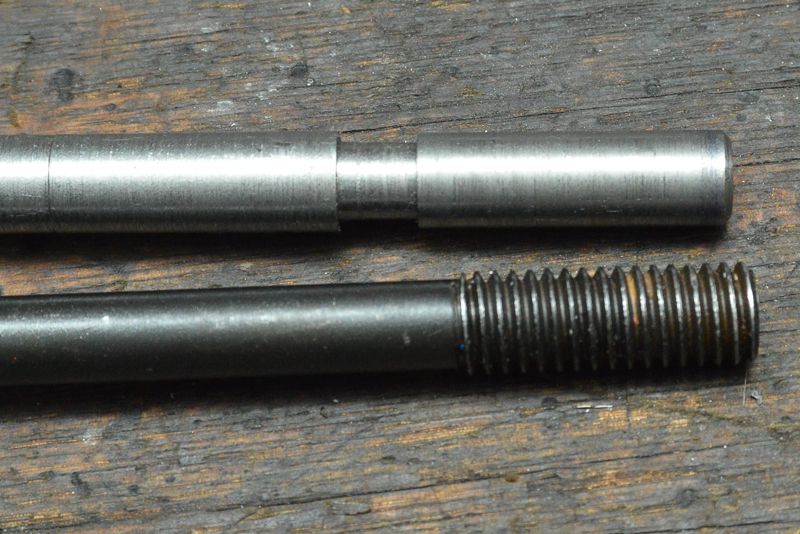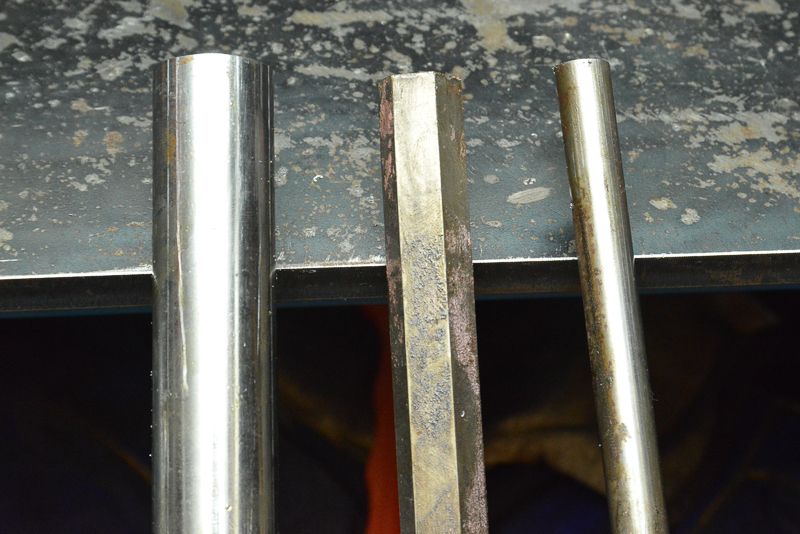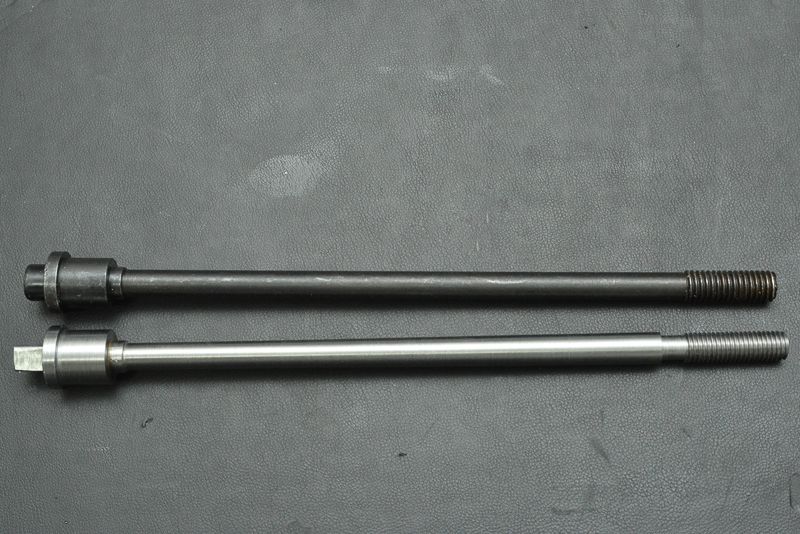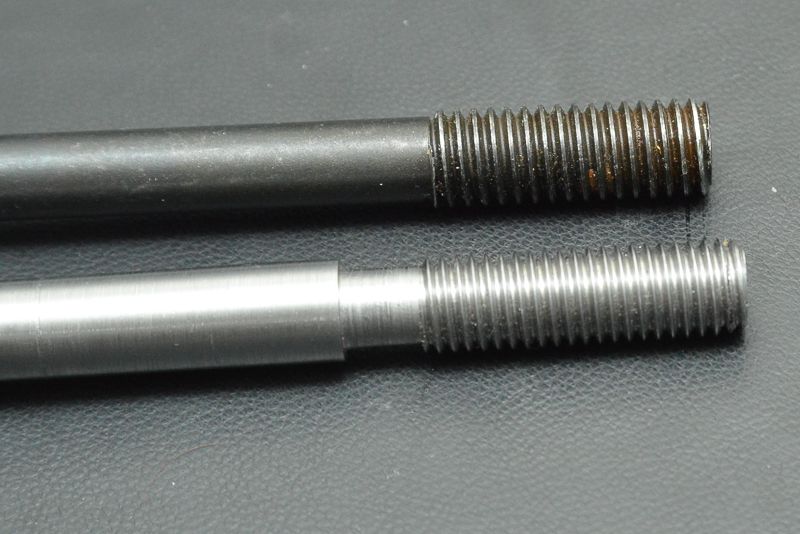Well, got a little bit further today. I widened and deepened the undercut and parted off the tip to get the length right. The undercut is sitting at 9.5mm wide but there is plenty of room to go wider. I am pretty sure that is enough for me to withdraw the crossslide while powering down the lathe at the same time in this distance.
I also went by Bohler Udderholm and collected a bit of steel on the way home from work. I had an interesting commute, but it ended up being not that far out of my way only adding 20 minutes to the trip.
This is some 12mm and 25 mm round as well as a piece of 15.88mm hex in 1214 bright mild steel. In case you are wondering, that is 3/8" just to prove that imperial units are alive and well in a country that adopted metric 30 years or so ago). Bohler Udderholm being a German based company ( I think ) has no imperial measurements anywhere on their web site, so 15.88m it is!
The bad news is that I am told I can't weld this stuff ( might add that my welding skills are not much better than my thread cutting skills!).
The 12mm was only $12 a length but BU have a $50 minimum order and cash sales have to be arranged before 3:00pm but I was able to book it to a credit card over the phone and pick up after 4:00.
Anyway, these all came in 3.6m lengths and Trumpy and I have gone halves in it so we ended up with 1.8m (6') of each size for about $40 each. Now what he does not know is that when he comes over to pick it up later in the week, he has to give me a lesson in thread cutting!


I've got a meeting tomorrow evening so the next installment will be Wednesday. Hopefully, I will have time to get my change gears swapped over some time.
If anybody else in Brisbane wants some stock from BU and don't need metres of it, then I would be in for a shared buy like this and Trumpy may even join in too!









